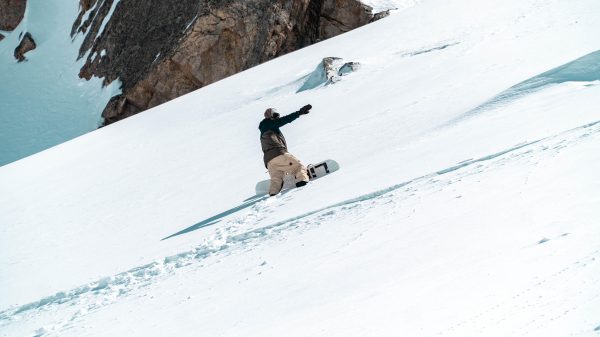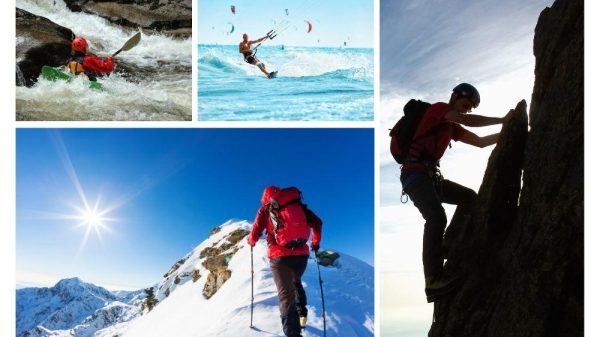In recent years, the allure of extreme sports has surged, captivating the imaginations of thrill-seekers and adrenaline enthusiasts worldwide. These activities, characterized by high risks and intense physical demands, range from skydiving and rock climbing to more niche pursuits like base jumping and big wave surfing. As the popularity of these sports grows, so too does the debate surrounding the appropriate age for participation. While some argue that imposing age restrictions could ensure the safety and well-being of younger athletes, others contend that such limitations may stifle passion and hinder the development of essential skills. This article delves into the multifaceted discussion of whether age restrictions should be implemented in extreme sports, examining the potential benefits and drawbacks from a legal, developmental, and cultural perspective. By analyzing expert opinions, statistical data, and real-world case studies, we aim to provide a comprehensive understanding of this complex issue and its implications for athletes, parents, and the sporting community at large.
Understanding the Risks: The Physical and Psychological Impacts of Extreme Sports on Young Participants
Engaging in extreme sports can be exhilarating for young participants, offering a sense of freedom and achievement. However, these activities come with inherent risks that need to be carefully considered. Physically, young athletes are still developing, and their bodies are more susceptible to injuries such as fractures, concussions, and sprains. These injuries can have long-term consequences, potentially impacting their physical health and development. Psychologically, the pressure to perform and the fear of failure can lead to anxiety and stress. Adolescents are at a critical stage of emotional development, and the intense nature of extreme sports can sometimes exacerbate feelings of inadequacy or lead to risky behavior.
- Physical Risks:
- Increased susceptibility to fractures and sprains
- Potential for long-term injuries affecting growth
- Higher likelihood of concussions and head trauma
- Psychological Risks:
- Heightened anxiety and stress levels
- Pressure to perform can lead to mental health issues
- Risk of developing a fear of failure

Evaluating Current Regulations: A Comparative Analysis of Age Restrictions in Extreme Sports Globally
Age restrictions in extreme sports vary significantly across the globe, reflecting diverse cultural attitudes and regulatory frameworks. In the United States, for example, many extreme sports like skydiving and bungee jumping impose a minimum age limit of 18, aligning with the age of legal adulthood. In contrast, New Zealand allows individuals as young as 10 to participate in similar activities, provided they have parental consent. This discrepancy raises questions about the balance between personal freedom and safety in sports that carry inherent risks.
Globally, these regulations are influenced by several factors, including cultural perceptions of risk, legal liability concerns, and the maturity required to understand and manage potential dangers. In some European countries, the emphasis is placed on rigorous training and certification rather than strict age limits. Here, the focus is on ensuring participants, regardless of age, possess the necessary skills and knowledge. Meanwhile, Australia adopts a more protective stance, often requiring both age restrictions and parental consent for minors, reflecting a societal emphasis on safeguarding youth. As such, understanding the rationale behind these varied approaches is crucial for developing informed policies that prioritize both safety and individual autonomy.
Balancing Freedom and Safety: Ethical Considerations in Imposing Age Limits on Extreme Sports
In the realm of extreme sports, the imposition of age limits raises a multitude of ethical questions, primarily revolving around the delicate balance between individual autonomy and societal responsibility. On one hand, proponents argue that age restrictions are essential to safeguard young athletes from the physical and psychological risks inherent in these high-adrenaline activities. The developing bodies and minds of minors may not fully comprehend the potential dangers, making them more susceptible to life-altering injuries or trauma. Furthermore, younger participants might be more prone to peer pressure, leading them to take unnecessary risks.
Conversely, opponents of strict age limitations emphasize the importance of personal freedom and the right to pursue passions irrespective of age. They argue that imposing age barriers may stifle talent and innovation, as many young athletes demonstrate exceptional skill and maturity far beyond their years. Additionally, age limits could potentially lead to the exclusion of individuals who possess the necessary competence and preparedness, thereby undermining the essence of fairness and opportunity. Key ethical considerations include:
- Informed Consent: Ensuring that young participants and their guardians are fully aware of the risks involved.
- Competency Assessment: Developing criteria that evaluate a participant’s ability beyond mere age.
- Safety Protocols: Implementing rigorous safety measures that protect all participants.
Recommendations for Policymakers: Establishing Evidence-Based Age Guidelines for Extreme Sports Participation
Policymakers must prioritize comprehensive research and data analysis when establishing age guidelines for extreme sports. The first step is to gather empirical evidence on the physical and psychological impacts of these activities on different age groups. This involves collaboration with sports scientists, pediatricians, and psychologists to ensure guidelines are grounded in scientific evidence. Once data is collected, policymakers should consider factors such as:
- Physical development milestones – Understanding the impact of extreme sports on developing bodies can help set minimum age requirements.
- Cognitive and emotional maturity – Evaluating the ability of young athletes to assess risks and handle the pressures associated with extreme sports.
- Injury statistics and risk factors – Analyzing age-specific injury rates to identify the safest age for participation.
Additionally, it is crucial to engage with stakeholders, including sports organizations, parents, and young athletes, to gather diverse perspectives and foster a balanced approach. Establishing a clear framework that includes graduated participation levels based on age and experience can help in mitigating risks while promoting safe and inclusive sports environments. Policymakers should also ensure that guidelines are regularly updated to reflect new research findings and evolving sports practices.










